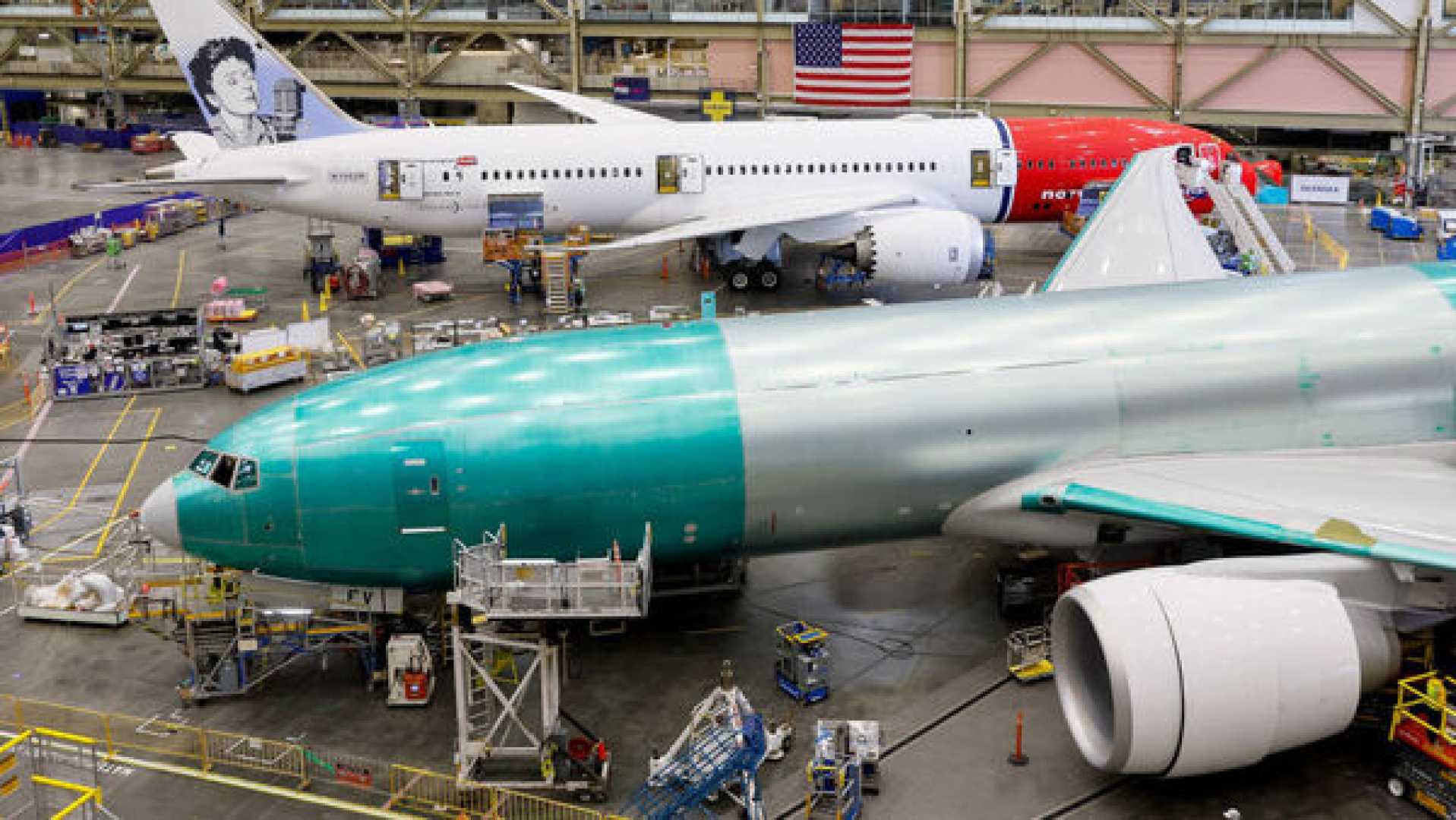Business
Boeing to Eliminate Shadow Factories Amid Production Challenges

SEATTLE—Boeing has announced plans to ramp up production of its 737 aircraft by eliminating shadow factories, locations where engineers and mechanics focus on fixes rather than new plane manufacturing. This initiative aims to free skilled workers for new production as the company seeks to meet increased demand, according to The Wall Street Journal’s Sharon Terlep.
The announcement comes as Boeing grapples with clearing out dozens of aircraft currently held in these shadow factories, including grounded 737 MAX and 787 Dreamliner models awaiting quality checks. Boeing’s efforts are crucial not only for its operations but also for the wider aerospace industry, which depends on steady production to support suppliers and airlines.
“We’re selling more than we can build,” said Ihssane Mounir, Boeing’s senior vice president, during a recent address to a group of manufacturers. Despite improvements in production efficiency and quality since his last meeting, Mounir acknowledged the ongoing challenges posed by the backlog and the need to remove the shadow factory bottlenecks.
In an effort to increase the production of 737 MAX jets to 38 per month, Boeing aims to close all shadow factory operations by mid-2025. During January, the company managed to produce approximately 20 MAX jets, signifying a substantial gap to meet its targets.
Political pressures have also played a role in Boeing’s urgency. President Trump has publicly expressed frustration regarding delays in the Air Force One replacement aircraft. Transportation Secretary Sean Duffy recently called for a meeting with Boeing’s CEO, Kelly Ortberg, to discuss quality and safety concerns, planning to visit the Boeing factory directly.
“It’s been a long journey,” stated finance chief Brian West. He urged analysts to anticipate resolving the shadow factory issue by midyear, which he believes will unlock considerable productivity gains.
Previously, Boeing had set a goal to eliminate these shadow factories by the end of 2024, but complications have delayed these efforts. A significant portion of the aircraft backlog includes 737 MAX jets parked in Moses Lake, Washington, resulting from a worldwide grounding after recent crashes.
As part of its commitment to improved manufacturing, Boeing is enhancing its employee training, allowing managers more time on the factory floor, and simplifying work instructions. The company is also focused on addressing quality issues with its principal suppliers, particularly Spirit AeroSystems.
Downtime in the shadow factories has not only stalled production but also tied up skilled workers who could be building new planes. In the fall of 2023, Boeing faced issues that required significant reworking of 160 737 models in these facilities.
Changes at Boeing are not only necessary for the manufacturer but also for its suppliers, many of whom run on tight profit margins and depend on consistent orders. Airlines, too, have suffered from Boeing’s slow production, which has impacted revenues and led to route cancellations.
“They appear to be on a good path,” said Southwest Airlines CEO Bob Jordan, noting the progress at Boeing during a recent earnings call. “However, we know they still have much work to do to meet our expectations for deliveries.”












